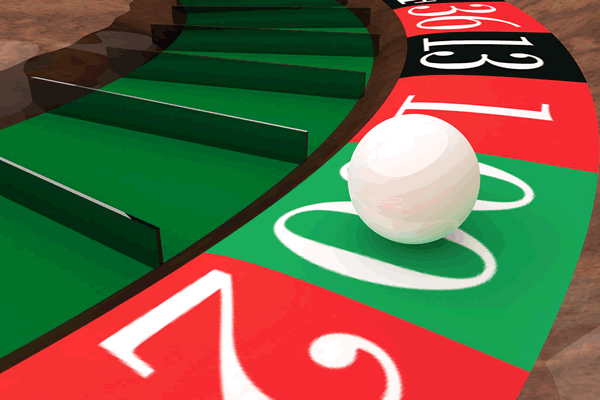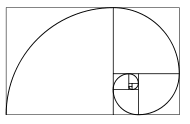Gambler’s Guide To The Top 7 Progression Betting Systems

Betting systems have been around for decades. They dictate how you should bet, along with the size of your wagers, according to the outcomes of previous hands.
A lot of experienced gamblers swear by these systems. Some do so because they like the methodical approach it offers to gambling. Others claim their preferred betting schemes lower the house’s edge on their favorite casino games.
Is it true? Do these casino betting systems actually work?
Will they help you to make money at quality gambling websites like Bovada Casino and Slots.lv?
Over the short term, they can seem to. But that’s mostly a matter of luck. Over the long run, they’re statistically a nonstarter. No betting system on earth will reduce the house’s edge.
Having said that, there’s a lot of interest in using these schemes, if only to add structure to one’s wagering. So I’ll cover the seven most popular ones below. I’ll explain the basics of how they work and highlight some of their pros and cons.
Before we begin, it’s useful to understand the difference between positive progression betting systems and negative progression betting systems.
Positive Progression Vs. Negative Progression Systems
![]() A positive progression scheme is one that entails increasing the size of your bets with each win. For example, if you bet $5 on a hand in blackjack and win, your bet on the next hand should be more than $5. If you win that hand, you’d wager a still higher amount on the following hand. And so on.
A positive progression scheme is one that entails increasing the size of your bets with each win. For example, if you bet $5 on a hand in blackjack and win, your bet on the next hand should be more than $5. If you win that hand, you’d wager a still higher amount on the following hand. And so on.
Conversely, a positive progression scheme calls for lowering the amount of your bet if you lose a hand. If you were to lose the initial $5 blackjack hand, you’d bet less than $5 on the next hand.
A negative progression scheme works in the opposite manner: you increase the size of your bets each time you lose and decrease their size each time you win. The idea is that raising the stakes after each loss allows you to quickly recoup your money when luck finally turns your way.
Both types of betting schemes, positive progression and negative progression, are found in the list below.
It’s worth noting that negative progression systems are exceptionally risky. An extended losing streak can literally wipe out your bankroll. So if you’re going to use any of the following systems, stick to those for which you increase your stakes with each win and decrease them with each loss.
Number One – The Martingale Betting System
Of all betting systems, this is the most popular one. It’s a negative progression scheme that has been used for centuries. Countless variations have sprung up over the years as gamblers have tweaked the original strategy to produce better results.
Here’s how it works:
You double your bet after each loss.
For example, if you bet $5 and lose, your next bet would be $10. If you lose that round, you would follow up with a $20 bet. Then, $40. Then $80. The idea is that you’ll recoup your losses when you finally win.
The Martingale system is mostly used on bets that pay even money.
Examples include betting on red or black on roulette and betting the Pass line in craps. Many folks also use the Martingale when they play baccarat and blackjack.
Bottom line: it’s simple and easy to use. But it can be hazardous to your bankroll. You can see the wiki entry to read more and see some mathmatical analysis.
Number Two – The Paroli Betting System
The Paroli betting system is a positive progression scheme. It’s sometimes referred to as the Reverse Martingale system.
Here’s how it works:
While the Martingale calls for doubling your bet after each loss, the Paroli system calls for doubling it after each win. If you bet $5 and win, you’d bet $10 on the next round.
Most gamblers who use the Paroli method set a quitting point – for example, three rounds into a winning streak. The idea is to quit during the streak since a single loss will claim all of their winnings plus a little more.
Here’s a hypothetical winning streak that illustrates this outcome:
- $5 + $10 + $20 + $40 + $80 = $155 profit
The next wager would be $160 (double the previous wager). If you were to bet that amount and lose, you’d suffer a net loss of $5. The trick is to stop doubling your bets before suffering that loss.
The Paroli system is usually applied to roulette. But like the Martingale, it can be used effectively on any casino game that offers even money wagers.
Bottom line: If you’re going to use this approach to betting, set a quitting point.
Number Three – The D’Alembert System
The D’Alembert betting system is a negative progression scheme. It’s slightly more complicated than the Martingale and Paroli systems, but still easy to apply.
Here’s how it works:
From the moment you start playing, you keep the amount of your wager level as long as you continue to win. Once you lose a round, you increase your wager by one. Once you win again, you decrease your wager by one.
The idea behind the D’Alembert scheme is that an equal number of wins and losses will result in a small profit.
Here’s a hypothetical scenario that illustrates this outcome:
- Round 1: bet $5, win, total profit = +$10
- Round 2: bet $5, win, total profit = +$15
- Round 3: bet $5, lose, total profit = +$10
- Round 4: bet $6, lose, total profit = +$4
- Round 5: bet $7, win, total profit = +$11
- Round 6: bet $6, lose, total profit = +$5
- Round 7: bet $7, lose, total profit = -$2
- Round 8: bet $8, win, total profit = +$6
- Round 9: bet $7, lose, total profit = -$1
- Round 10: bet $8, win, total profit = +$7
Notice that five wins and five losses puts you in the black.
Like the Paroli and Martingale, the D’Alembert is suitable for even money wagers. For example, you’ll see gamblers use it when they place outside bets in roulette, the Pass line bet in craps, and when they play baccarat. The more daring bettors use it on blackjack.
Bottom line: the D’Alembert system is one of the “safer” negative progression schemes in use today. Just bear in mind, it’s predicated on maintaining an evenly balanced win/loss record. It won’t work if you experience more losses than wins.
Number Four – The Iron Cross Betting System
If you’re a craps fan, you’ll eventually be tempted to use the Iron Cross. Technically, it’s neither a positive nor negative progression betting system. Instead, it focuses on the type of wager rather than its size.
Here’s how it works:
Place field bets and make place bets on the 5, 6, and 8. That guarantees you’re betting on every number with the exception of 7 (after the point has been established).
You might assume that betting on every number except 7 is a sound idea. After all, doing so gives you a lot of chances to win. To that end, you’ll probably win the majority of your bets. The problem is that your return from each winning bet is small while your cumulative loss is large.
Recall from Tip #6 in my guide “Top 10 Tips For Winning Casino Craps” that field bets come with a relatively high house edge (2.78%). You’re paid even money on 3, 4, 9, 10, and 11. You’re paid 2:1 if a 2 is rolled and 3:1 if a 12 is rolled.
Also, recall from Tip #3 that the place 6 and place 8 bets have a slim house edge of only 0.46% (on a roll by roll basis). The house edge on the place 5 is higher at 1.11% (again, for single rolls).
Together, those numbers guarantee the Iron Cross betting system will return terrible results over the long run. The small profits you enjoy each time you roll something other than 7 will be quickly eaten when you finally roll a 7.
One variation of this betting scheme that COULD work is to set a quitting point, similar to the one you would set using the Paroli system. After you reach that point (for example, three winning rolls), pull all of your chips off the table and start over. That allows you to take advantage of winning streaks and avoid the eventual loss that accompanies rolling a 7.
Another approach that might work is to pull your field and place 5 bets when you reach your quitting point. Allow your place 6 and place 8 to ride until you roll a 7.
Bottom line: the traditional Iron Cross betting system is deeply flawed. If you’re going to use the Iron Cross, set a quitting point to protect your bankroll.
Number Five – The Labouchere Betting System
The Labouchere system is a negative progression scheme that’s typically used when playing roulette, but can be applied to any game that offers even money wagers. It’s more complicated than the Martingale system. In fact, it’s even more complex than the D’Alembert system. It helps to have a pencil and notepad near you.
Here’s how it works:
- First, choose a sequence of numbers. An example is 1-2-3-4-5.
- Second, decide on a betting increment. Let’s say $5.
- Third, for your first wager, add the first and last numbers of your sequence (1 and 5) and multiply the result by your betting increment ($5). The amount of your first bet would be $30.
If you win the round, you would cross off the 1 and 5 in your sequence. You would then follow the same process to determine the amount of your next wager. Continuing with the above example, you would add 2 and 4 (the first and last remaining numbers in your sequence) and multiply the result by $5.
Your next bet would thus be $30.
But let’s say you lose your first bet. In that case, don’t cross any numbers off your sequence. Instead, attach the result of adding the first and last numbers to the tail end of it. Your new sequence would be 1-2-3-4-5-6. You would then determine the amount of your next wager by adding the 1 and 6 (the new first and last numbers) and multiplying the result by $5 (your bet increment).
Your next bet would thus be $35.
Can you see why having a pencil and notepad near you is useful?
The biggest problem with the Labouchere system is the use of table limits. On an extended losing streak, your sequence can potentially grow to the point that you won’t be able to bet the amount you’re supposed to. The table limits will prevent you from doing so.
And that demolishes this scheme’s effectiveness.
That said, you can modify the Labouchere system so you don’t run up against the table limits as quickly. For example, use 1-1-1-2-2-2 as your sequence instead of 1-2-3-4-5. Or divide the bet amount in half when you lose a round.
Bottom line: The Labouchere is complicated and flawed. But if you like math and enjoy using complex models, you might find it fun to experiment with.
Number Six – The Fibonacci Betting System
 The Fibonacci betting system sounds like it comes straight out of a Dan Brown novel. It’s a negative progression scheme like the Martingale, D’Alembert, and Labouchere systems. Like the Labouchere, it calls for using a sequence to determine how much you should wager on any given round.
The Fibonacci betting system sounds like it comes straight out of a Dan Brown novel. It’s a negative progression scheme like the Martingale, D’Alembert, and Labouchere systems. Like the Labouchere, it calls for using a sequence to determine how much you should wager on any given round.
Here’s how it works:
The Fibonacci sequence is already set; you don’t choose your own numbers. Here’s the sequence…
1, 1, 2, 3, 5, 8, 13, 21, 34, 55, 89, 144, 233, 377, 610, and so on.
If you’re curious how these numbers were chosen, note that each one is the result of adding the two numbers that precede it.
The values in the sequence don’t necessarily represent the amounts you’re supposed to wager. Rather, they dictate the rise and fall of your bets based on your wins and losses (more on this in moment). For example, if you choose a betting increment of $3, the corresponding bet amounts from the Fibonacci sequence would be…
$3, $3, $6, $9, $15, $24, $39, $63, $102, $165, $267, $432, $699, $1,131, $1,830, and so on.
When you win a round, you progress one step forward through the sequence. When you lose a round, you retreat two steps backward.
Here’s a hypothetical scenario, including a winning streak in the beginning. For simplicity, I’ll use the values in the sequence to represent the actual bet amounts:
- Round 1: bet $1, win, total profit = +$1
- Round 2: bet $1, win, total profit = +$2
- Round 3: bet $2, win, total profit = +$4
- Round 4: bet $3, win, total profit = +$7
- Round 5: bet $5, win, total profit = +$12
- Round 6: bet $8, lose, total profit = +$4
- Round 7: bet $3, win, total profit = +$7
- Round 8: bet $5, win, total profit = +$12
- Round 9: bet $8, win, total profit = +$20
- Round 10: bet $13, win, total profit = +$33
- Round 11: bet $21, lose, total profit = $12
- Round 12: bet $8, lose, total profit = $4
- Round 13: bet $3, lose, total profit = $1
- Round 14: bet $1, lose, total profit = $0
The idea behind the Fibonacci betting system is that you can leverage short-term winning streaks while avoiding huge losses. In that way, it works similarly to the Martingale system. The difference is that the Fibonacci is a more refined negative progression scheme; it won’t cause your bankroll to implode as quickly.
This approach is best suited for even money bets.
Bottom line: the Fibonacci system is safer than other negative progression schemes. Note that it’s difficult to advance through the sequence unless you enjoy an extended winning streak.
Number Seven – The Parlay Betting System
The Parlay system is a positive progression scheme. It’s typically used in blackjack, but can be applied to any even money wager.
Like the Paroli, it calls for increasing your bet with each win. It deviates from the Paroli in the amount of the increase. With the Parlay betting system, you let your bet and winnings ride.
Here’s how it works:
Choose your starting bet amount. Then, each time you win, add your winnings to your initial wager. When you lose, retreat back to your original wager.
Here’s a hypothetical scenario:
Suppose you’re playing blackjack and bet $10. You beat the dealer on the first hand, resulting in a $10 payout. You would then bet $20 (your initial bet plus your winnings) on the next hand.
Let’s suppose you receive a blackjack on the next hand. You’d be paid 3:2 on your $20 wager, or $30. Your next bet would then be $50.
What happens when you lose a hand? You would return to the amount of your initial wager ($10).
As with the Paroli system, it’s a good idea to set a quitting point. That will help you to lock in your profits from short-term winning streaks.
Bottom line: the Parlay system is simple to use, but requires a winning streak to work well. Also, if you can avoid a losing streak, your net loss will be minimal since you’re betting with your winnings from previous hands.
Last Thoughts On Using Betting Systems
While these betting systems seem promising, none of them work over the long run. Don’t trust anyone who tries to convince you otherwise.
That said, these methods can produce good results over short-term winning streaks.
If you’re tempted to use them, there’s a no-risk way you can do so. Visit Bovada Casino and Slots.lv, and register accounts at both. Then, play their games for free (in Practice Mode) while experimenting with the seven betting systems outlined above.
You’ll risk no money while having fun putting these betting schemes to the test!
More Great Content





